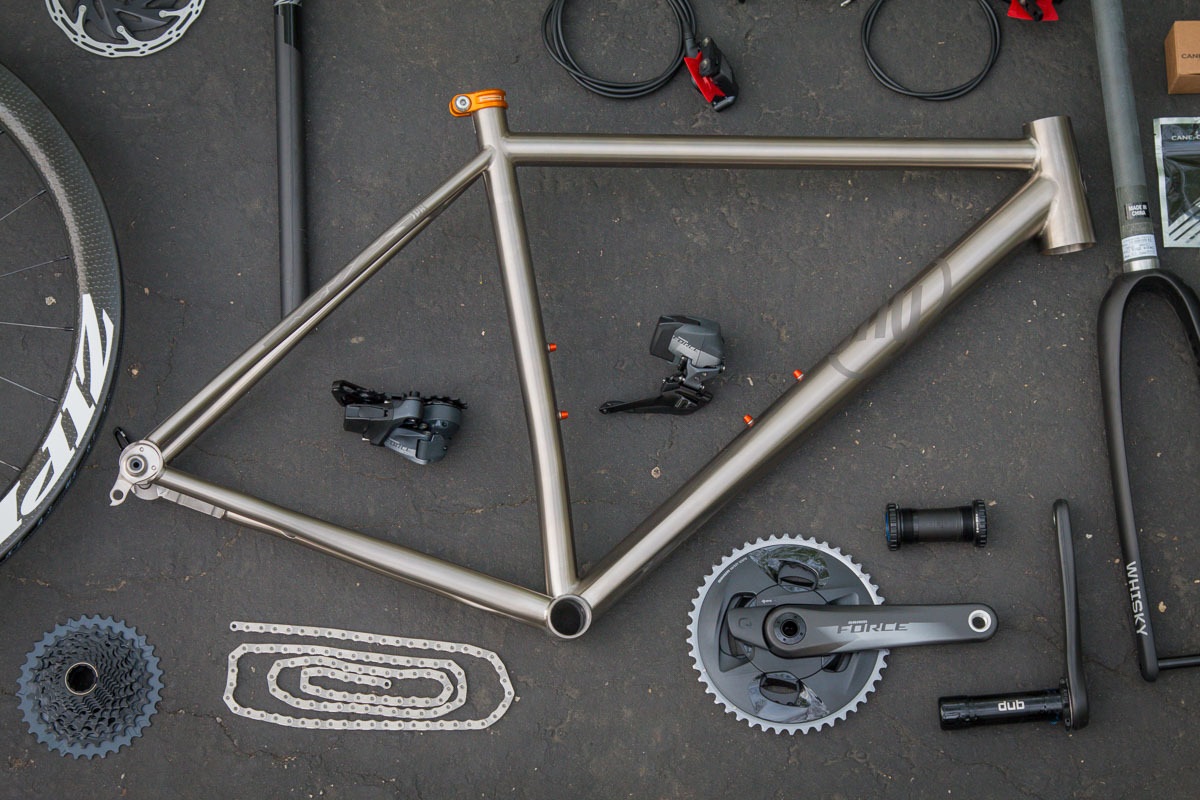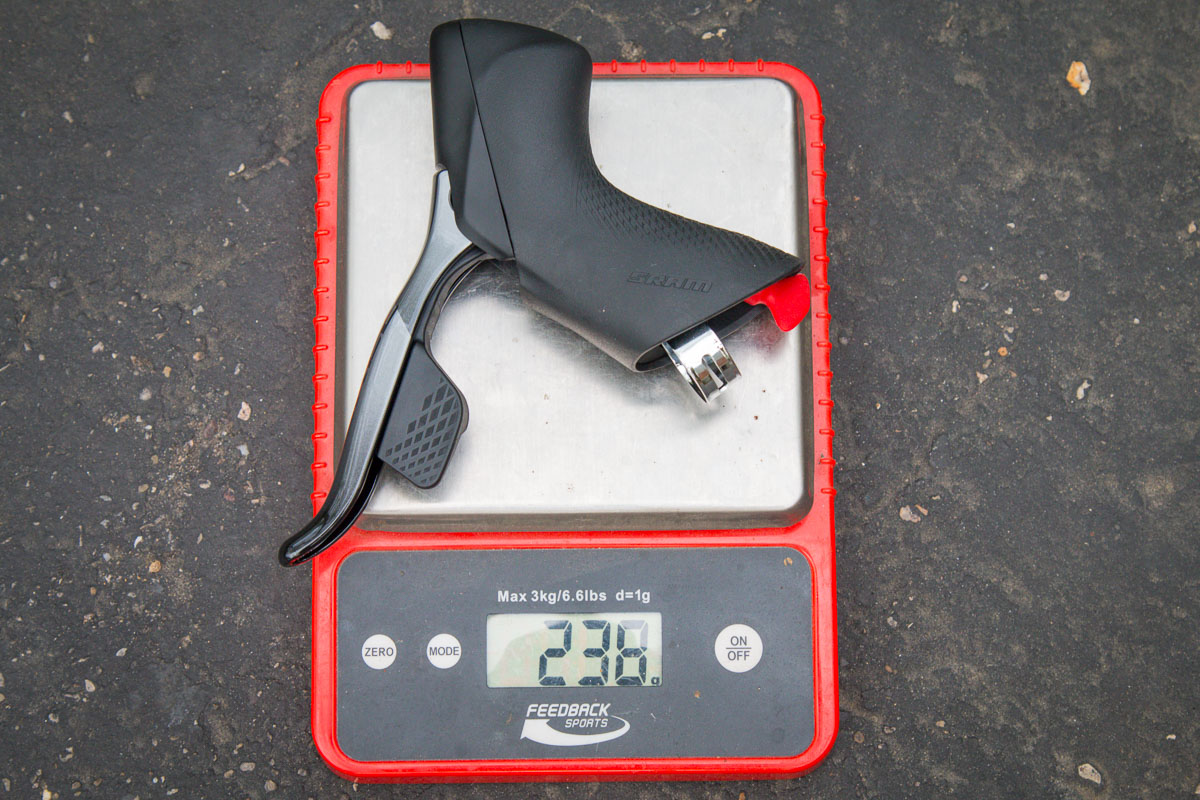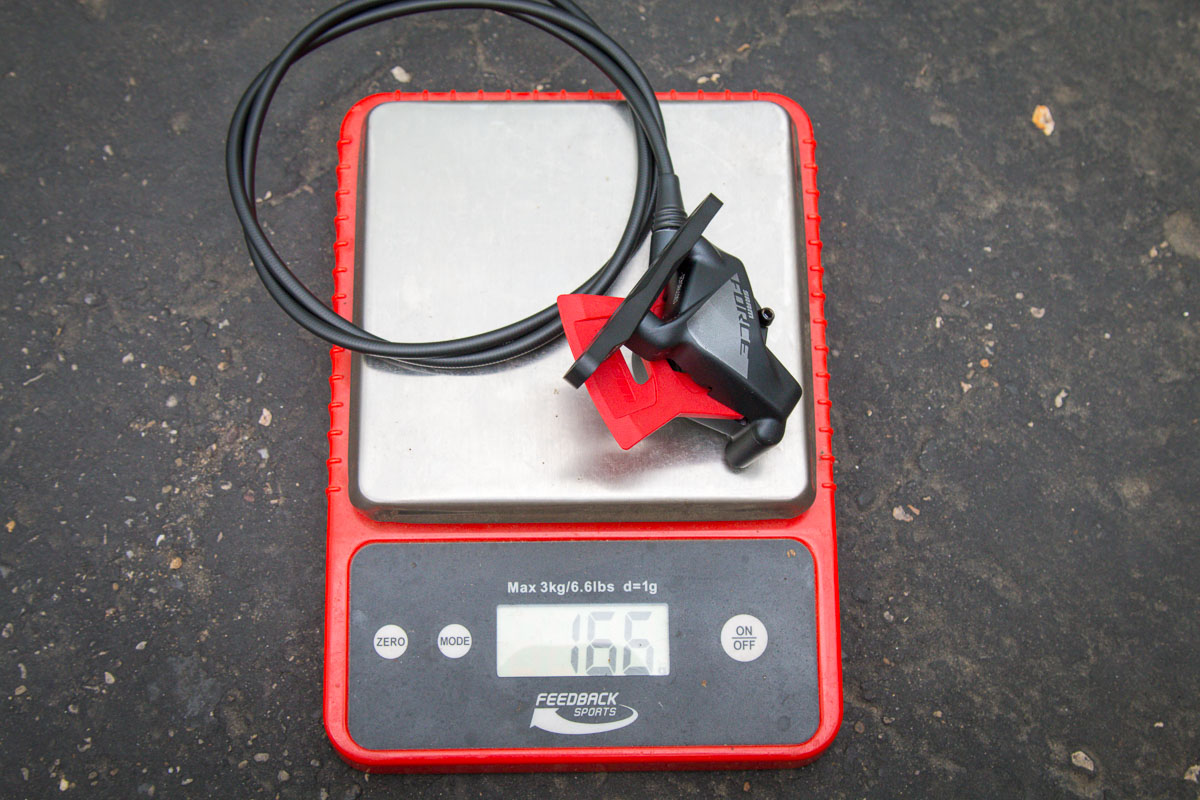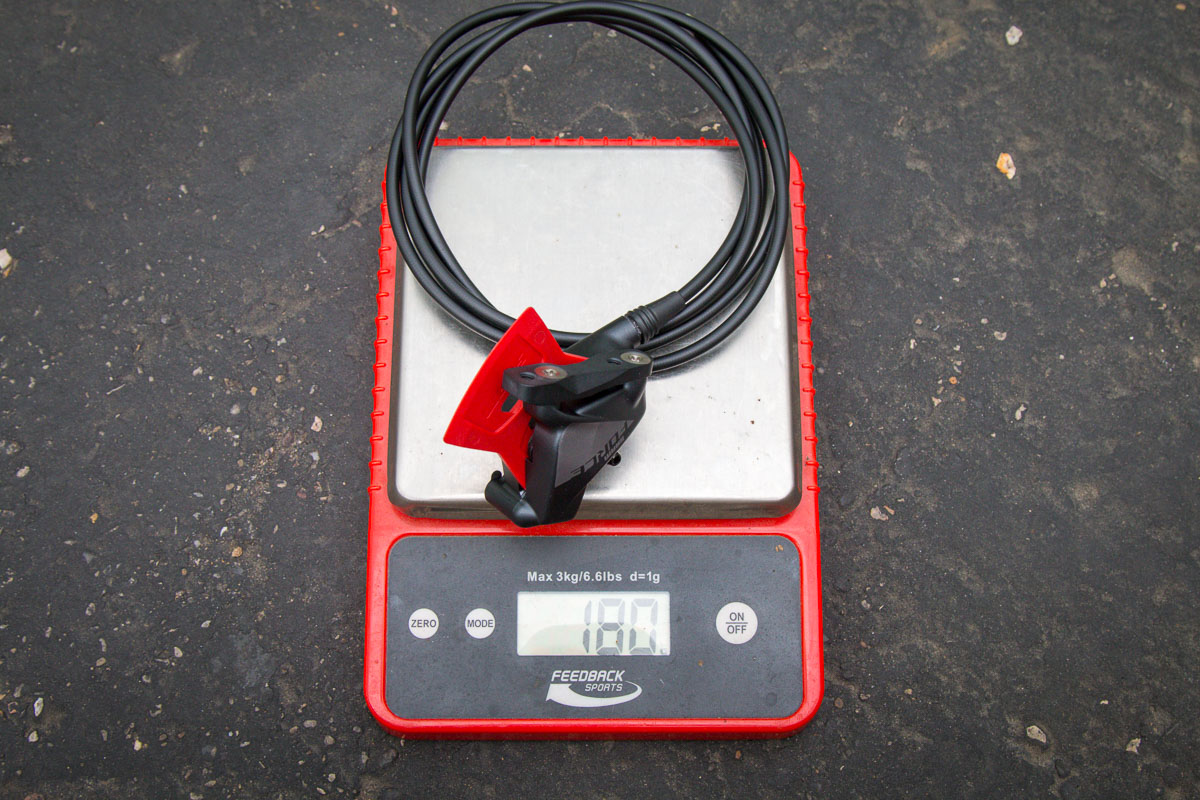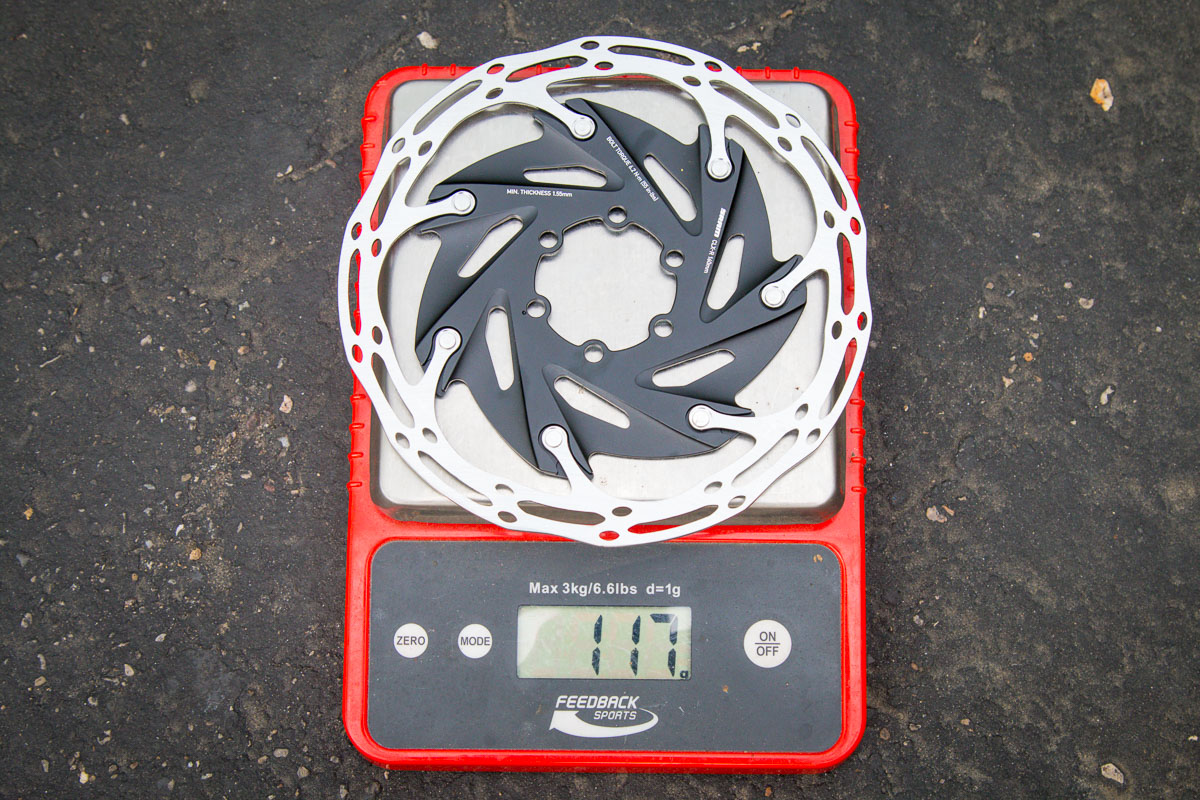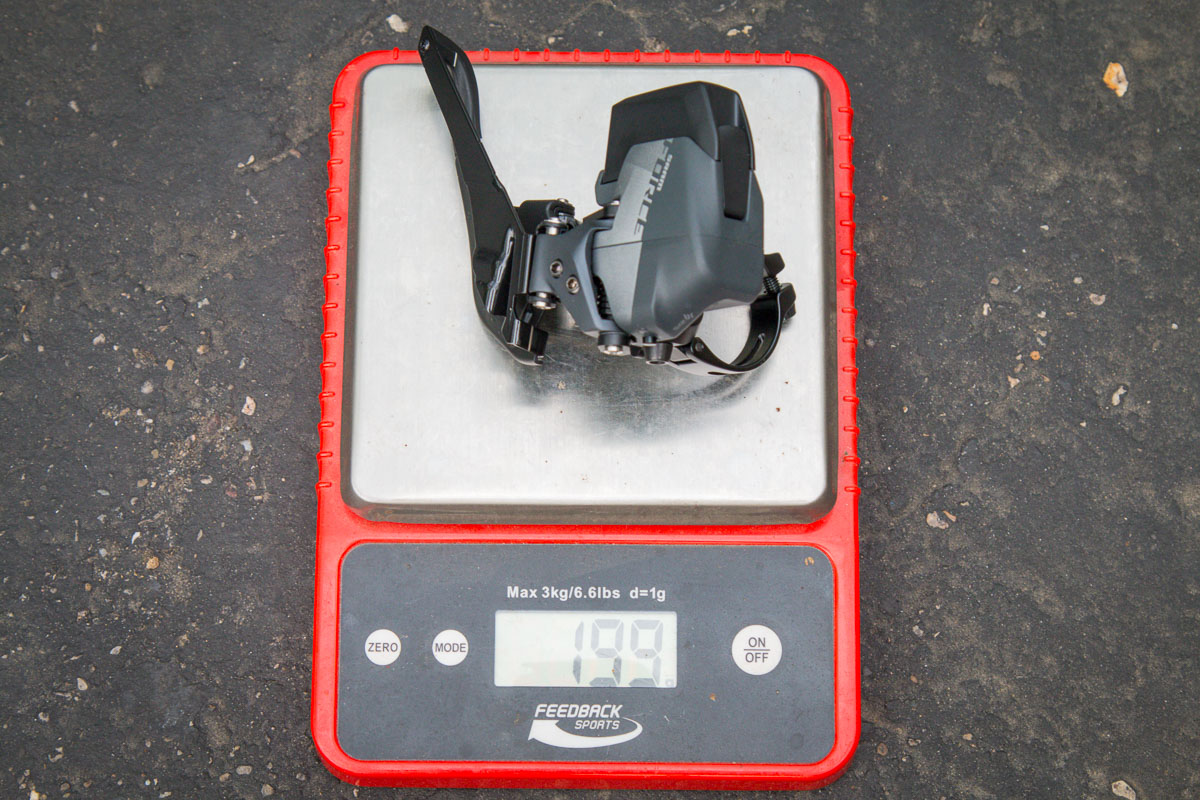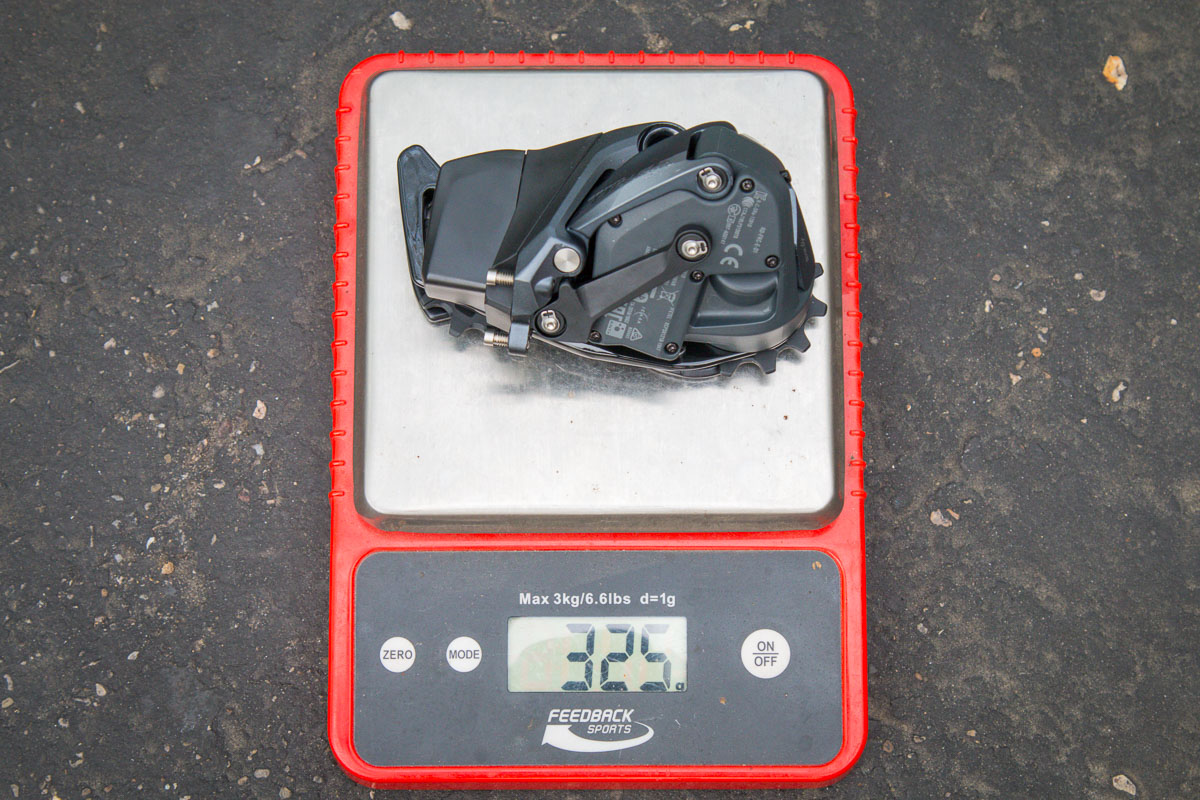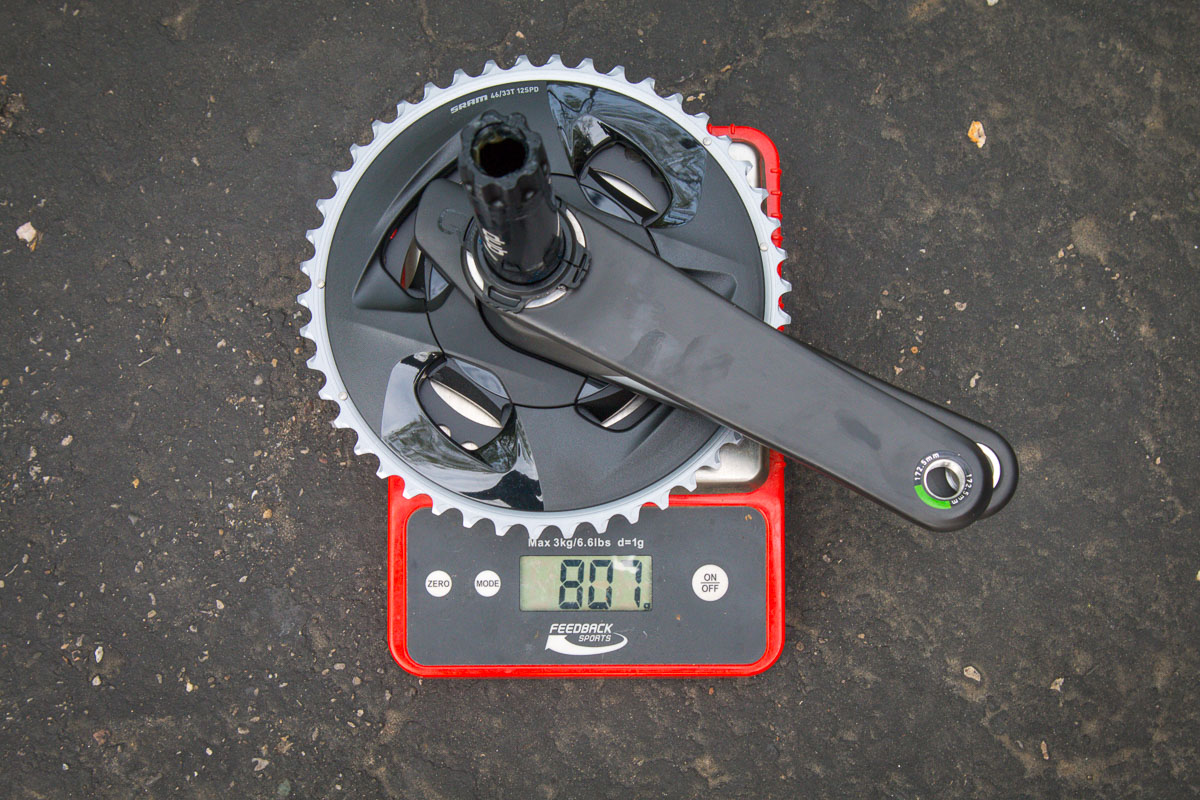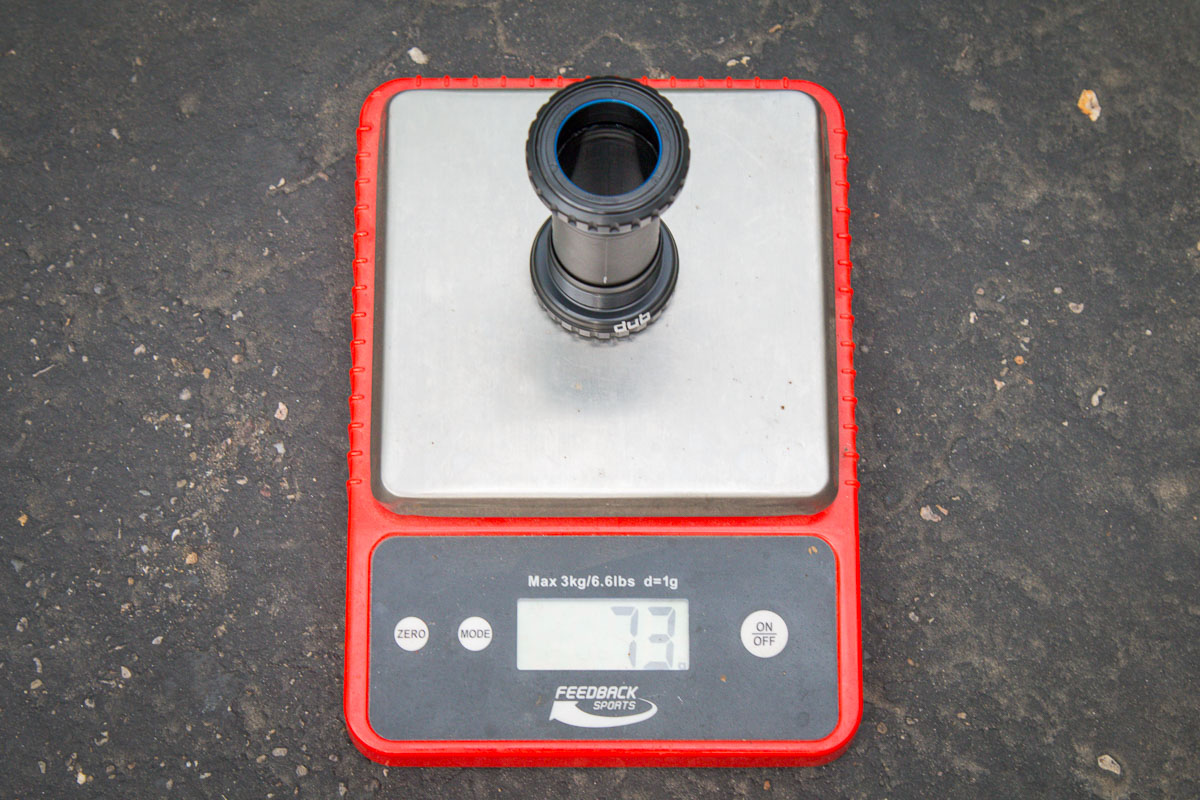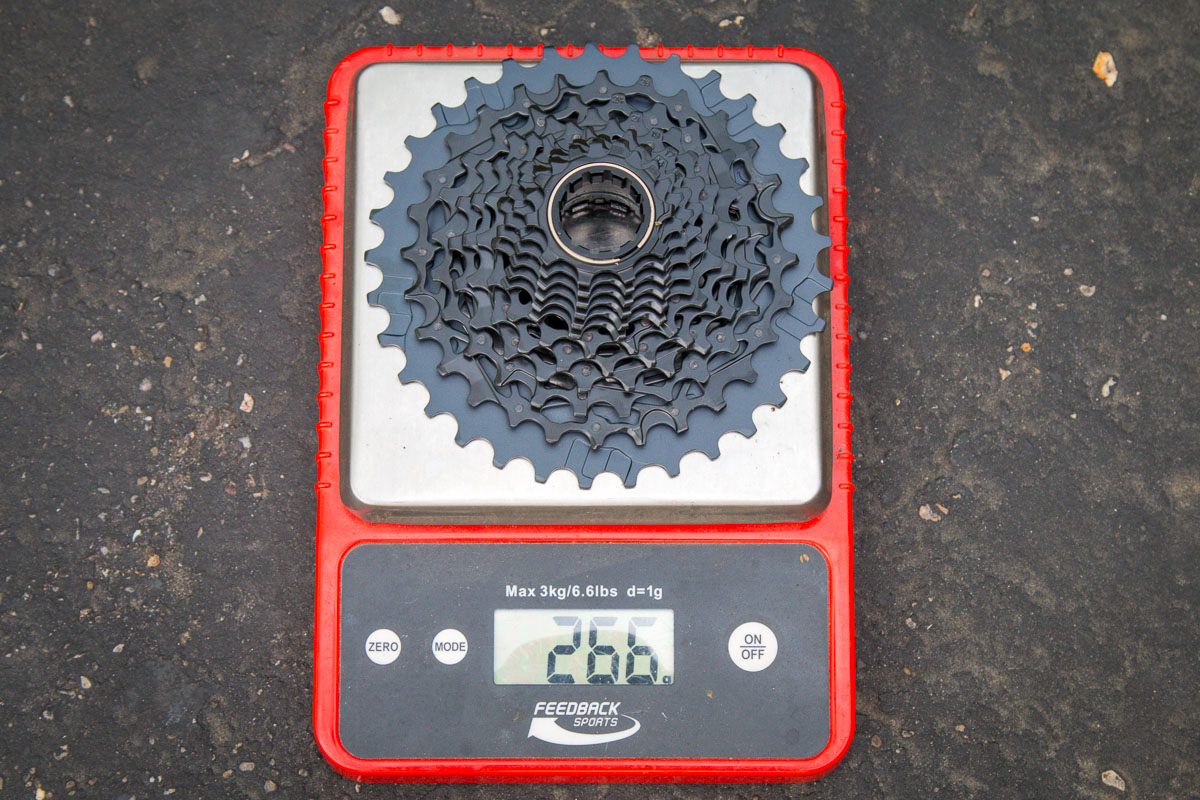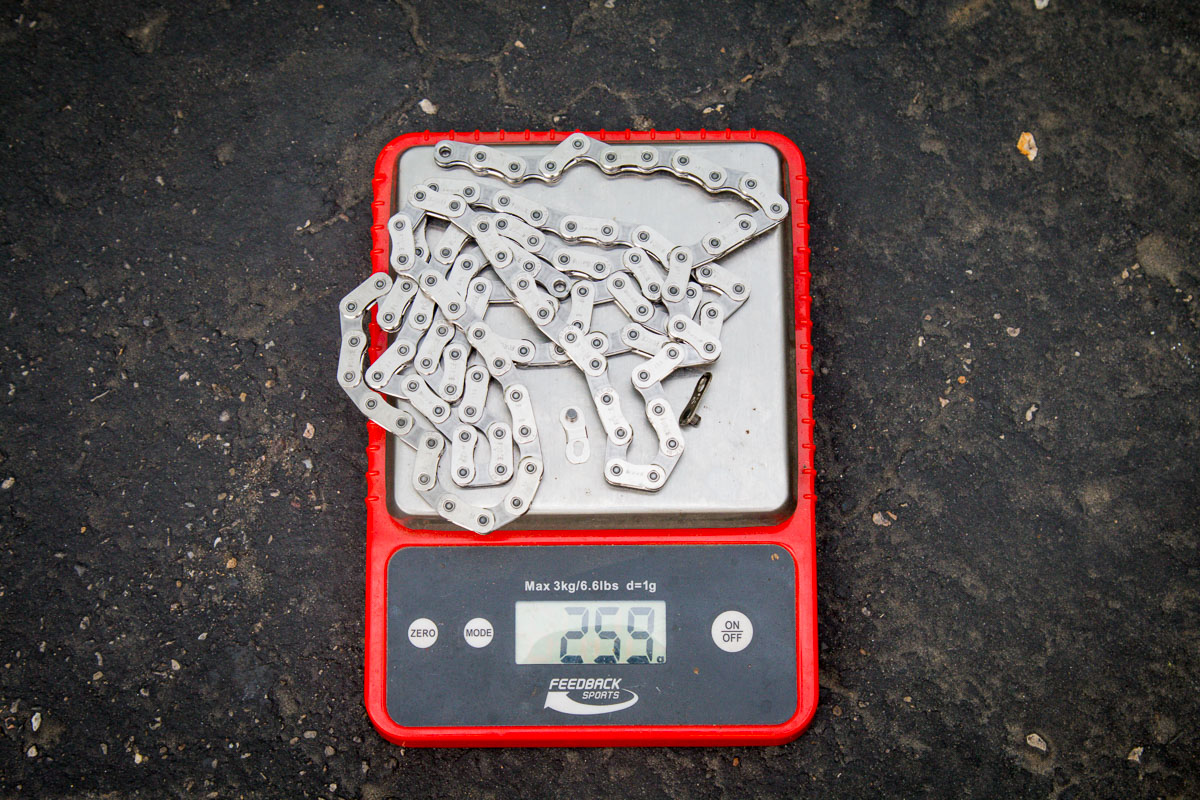It’s been an exciting year for new 12 speed groups – for both road and mountain. On the road side, one of the biggest introductions has been the new SRAM Force eTap AXS group. Essentially a more affordable version of the SRAM RED eTap AXS group, the Force edition brings improved wireless shifting to a more affordable level. This Force group ended up being the catalyst of a new project built (hinted at by the title photo), but first, let’s check in on the group itself.
Starting at the controls, each Force eTap AXS shifter came in at 238g. As part of the AXS family, the shifters feature hydraulic brake levers and single buttons for the wireless electronic shifting operated by an internal coin cell battery. The biggest difference between SRAM RED and Force shifters is the addition of a second Blip port on the RED shifters for a total of 4 (Force has two), and different materials for the lever blade.
SRAM Force opts for a two piece caliper design instead of the monobloc calipers found on RED, which results in weights of 166g and 180g for the front and rear brake respectively with full length hoses, 160mm rotor adapters with hardware, and a pad spacer. Pro Tip: when you’re ready to connect the hoses and bleed the system, you’ll need a newer SRAM Bleed Kit that includes the Bleeding Edge connector for the caliper bleed port.
Opting to run 160mm rotors front and rear for this build, the six bolt Centerline XR (CLX-R) rotor is the same that you’ll find with the SRAM RED group and weighs in at 117g per rotor without hardware. It’s also available in Centerlock, with both options offered in 140mm or 160mm sizes.
If you’re not into disc brakes there is also a SRAM Force eTap group with mechanical levers for rim or mechanical disc brakes.
I’ve been spending a lot of time on 1x groups lately, but for this build I wanted the range of 2x – plus I just wanted to try the full set up. Not to mention if I want to switch to 1x, I can just ditch the front derailleur and run up to a 33t cassette on the same rear derailleur, though that certainly wouldn’t provide the same range. Checking in at 199g with a 31.8mm front derailleur clamp adapter, the derailleur was weighed with the rechargeable battery which is the same for all eTap groups.
The rear derailleur also uses the same battery, and weighed in at 325g. Keeping things simple, for now there is only one rear derailleur model that will fit up to 33t cassettes in 1x or 2x configurations. Here an aluminum cage and steel pulley bearings are used which add a tiny bit to the overall weight of the group.
For the gearing, I opted for the lowest gearing possible since I would be riding somewhat loaded and for the most part it was a good decision – but more on that in the next post. At the crank that meant the use of a 46/33t chainring combo and this crankset is equipped with the AXS Power Meter. All in, 807g gets you a 2x crank with 172.5 arms and power.
Add in a SRAM DUB bottom bracket to complete the crankset, and you’re looking at another 73g for a BSA threaded BB.
Out back, I again skewed towards the low side with a 10-33t XG-1270 cassette. This gets you the same high range as the 10-26 and 10-28t cassettes, but with bigger jumps at the top end of the cassette to get up to the 33t cog – 10,11,12,13,14,15,17,19,21,24,28,33. The cassette weighs in at 266g and it requires the new-ish XDR freehub body which is 1.85mm longer than an XD freehub.
To finish off the drivetrain, you need a chain. Specifically the new SRAM Force (or SRAM RED) Flattop chain. The CN-FRC-D1 is Hard Chrome plated with solid pins and weighs in at 259g uncut. Note that it’s weighed with the new Flattop Powerlock which is also specific to the new chain design. Protip: not all chaintools are compatible with the new Flattop chains, so make sure you have the right tool before diving into your build.
Complete group weight
All in with the product combinations above, you’re looking at roughly 2985g. That of course is with full length brake hoses, an unbled brake system, uncut chain, and with a few pieces of missing hardware like rotor mounting bolts.
Next up is the story behind the build along with all of the parts chosen. Stay tuned!
